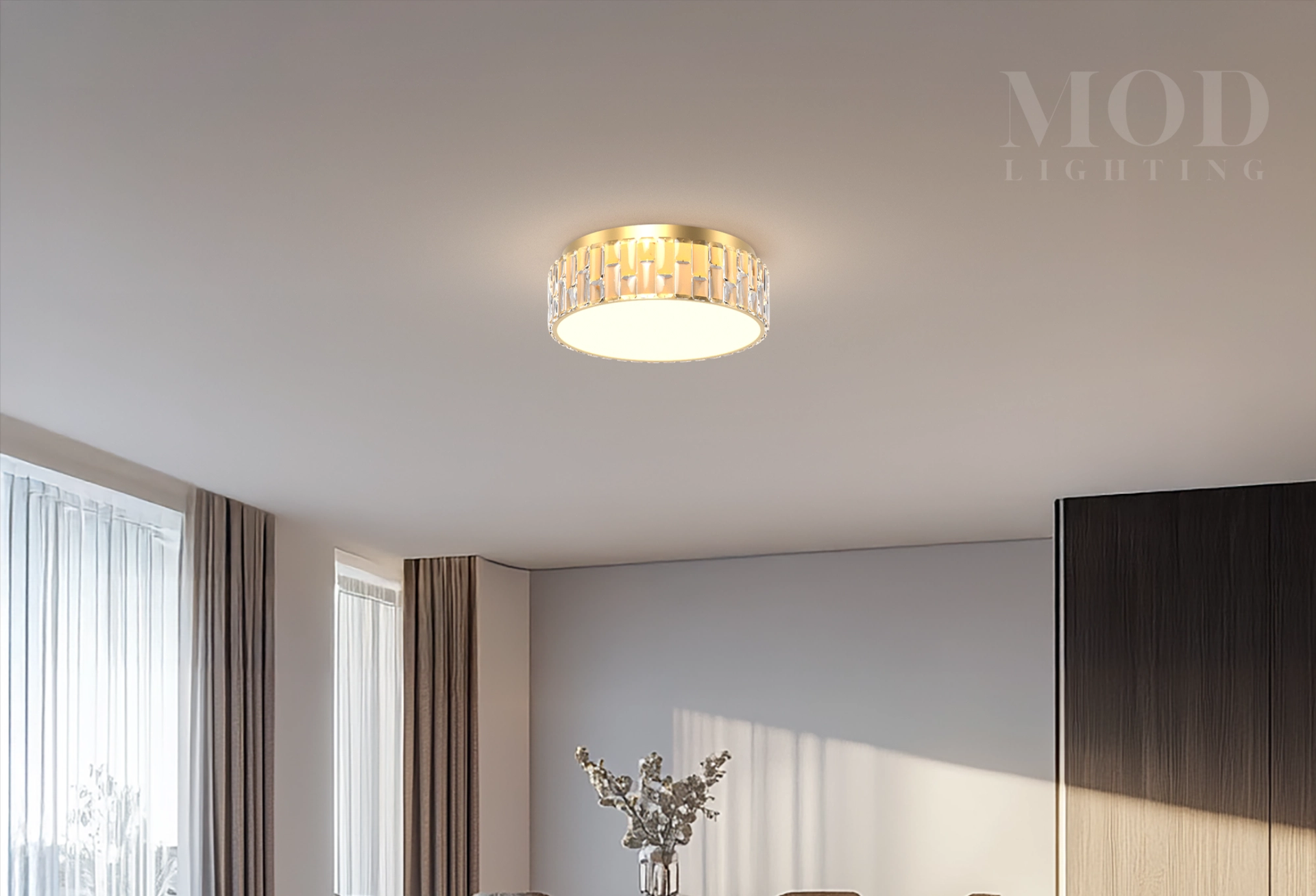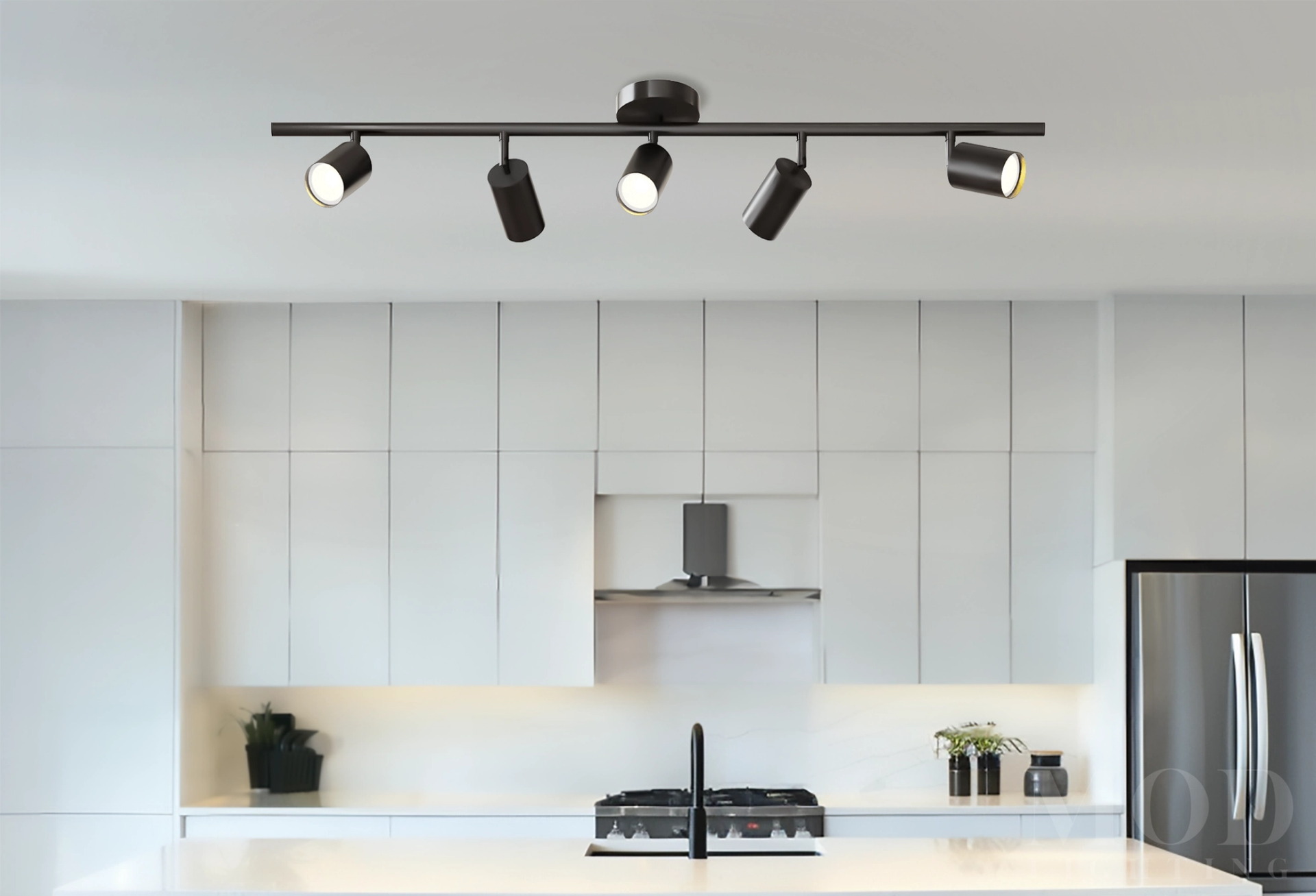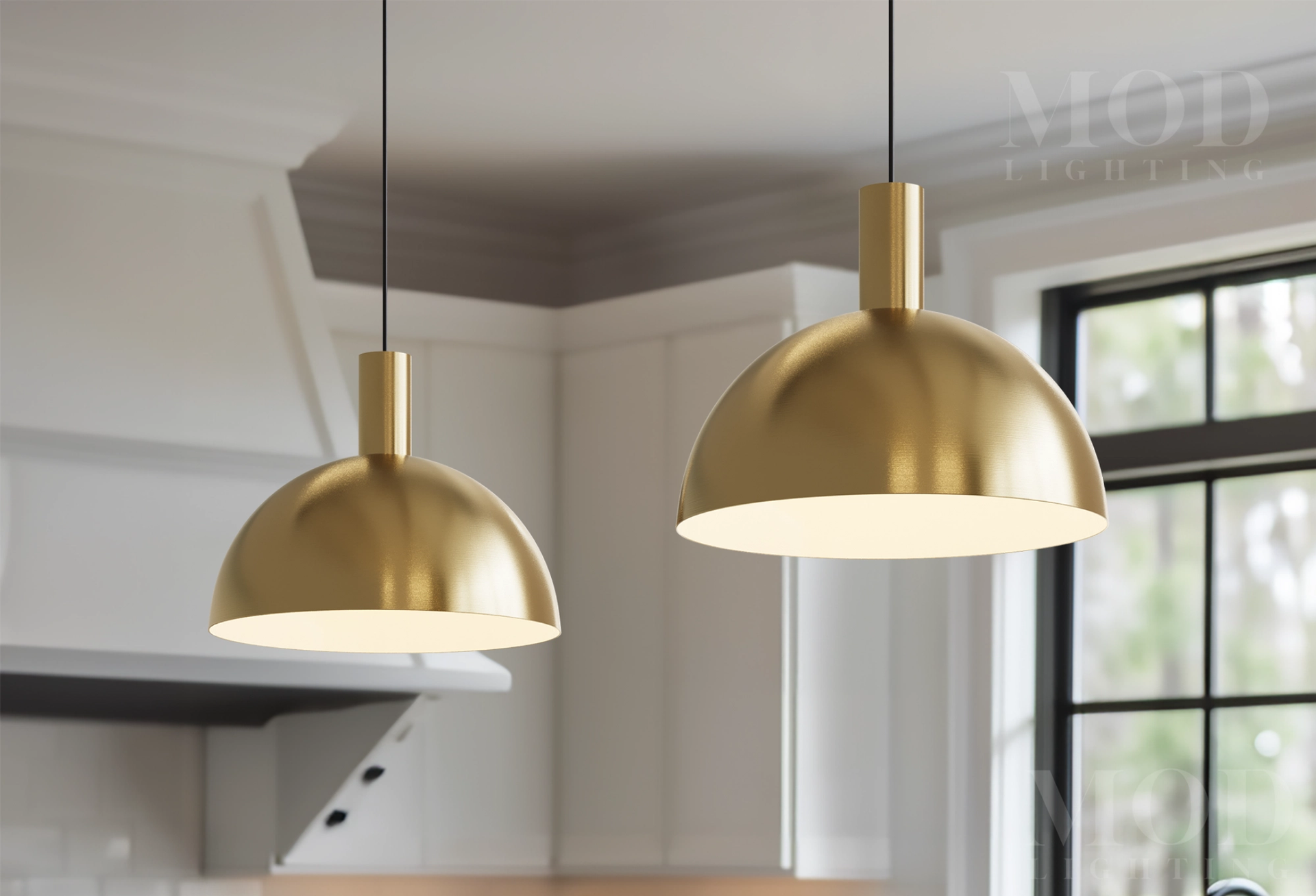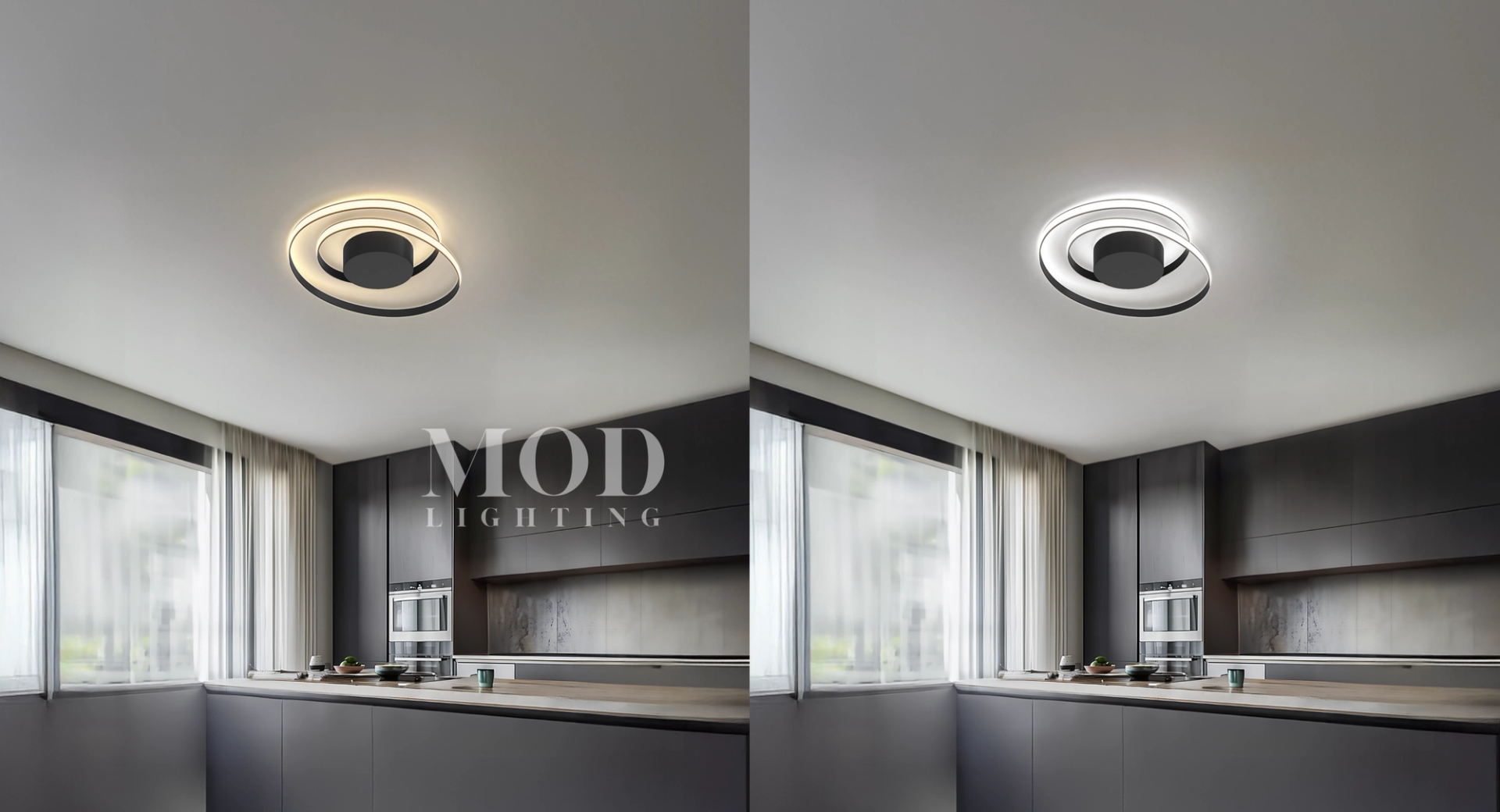
Should You Go With Warm White or Cool White Lights in Your Kitchen?
Among all the various types of fixtures in your home, one that should never be overlooked is kitchen lighting. A well-lit kitchen not only evokes a warm, inviting atmosphere for guests but also adds functionality, making essential tasks like chopping, cleaning, and meal preparation easier and more efficient.
But it's not just about selecting the right design, shape, or style of the fixture; it's also about finding the right color temperature. Out of the different types of kitchen fixtures, there are generally two options: warm white and cool white; both have unique characteristics and benefits.
There's no right or wrong in terms of light color either; it's purely a matter of knowing their characteristics and benefits. Kitchen lighting is often influenced by personal preference, style, color temperature, and energy efficiency.
Explore with us the essentials of kitchen lighting, from color temperature to fixture types, and expert tips on choosing the right lighting that transforms your kitchen.
Understanding color temperature
To choose the right color for your kitchen fixtures, you need a solid understanding of light temperature. Color temperature is measured in Kelvins and dictates whether the light reflected will be warm or cool.
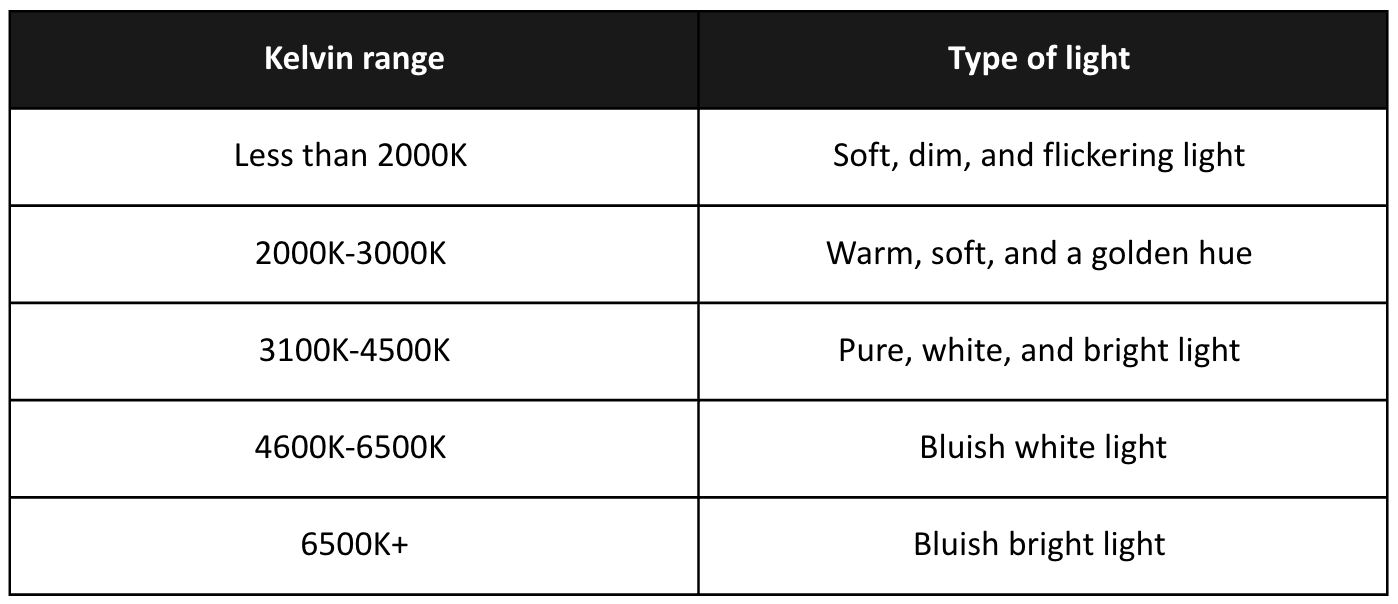
Warm light for a kitchen fixture has a lower color temperature ranging between (2700K-3000K) and cool white fixtures have a higher temperature (3500K-5000K). Here’s a quick breakdown of the different kelvins a light may have:
REMEMBER: The color temperature of light influences the mood and ambiance of your kitchen. Generally, warm light induces a cozy and relaxing atmosphere, whereas cool white light helps create a bright and airy one.
Think about the different areas of your kitchen and the type of light that might be needed to undergo certain tasks. For added benefits, consider choosing LED bulbs; they’re energy-efficient and available in a range of color temperatures to suit various functions.
Types of Lighting
When it comes to your kitchen, there are several types of lighting to consider, including ambient, task, and accent lighting.
Ambient lighting
Ambient lighting for a kitchen provides an overall, even, comfortable, and balanced illumination throughout the space. It acts as a foundational layer of light, ensuring the kitchen is well-lit and enhancing safety and functionality.
Pro Tip: Elara is a modern ceiling light that effortlessly blends with any kitchen interior, enabling a well-lit and balanced illumination throughout your kitchen. Its brushed gold finish and warm white light temperature cast a soft glow over the kitchen.
Task lighting
These fixtures draw attention to details, making them perfect to use under cabinets, shelves, or artwork and adding depth and dimension. They’re a shadow-free light and allow you to perform specific tasks, such as food preparation, cooking dishes, washing dishes, and more. It enhances safety and visibility by illuminating areas.
Pro Tip: Harris is an ideal task light that you can customize from 1-5 lights, adding a focused glow onto a countertop or kitchen island. Available in brushed gold or a matte black finish, it adds a contemporary look.
Accent lighting
If you want to evoke a specific mood in your kitchen, then you’ll probably need accent lighting. It often has focused beams of higher-intensity lighting. Most of these fixtures feature a dimmer switch, allowing you to control the intensity and ambiance, thereby changing the atmosphere of your kitchen according to the time of day or occasion.
Layered lighting
Another option for your kitchen is using layered lighting, which involves combining ambient lighting, task, and accent lighting to create a versatile environment.
LED Colour Temperature
Earlier we mentioned that you might consider choosing LED fixtures for your kitchen. Here’s a quick recap of why they make good fixtures for your kitchen space:
- Energy-efficient: LED bulbs often use significantly less energy than traditional incandescent bulbs, consuming around 75-80% less electricity.
- Long lifespan: On average, they can last around 50,000 hours, compared to incandescent bulbs, which have a lifespan of around 20,000 hours, making them more eco-friendly.
- Durability: Made with less fragile components withstanding high heat and vibrations from the kitchen. LEDs emit less heat and are safe, reducing environmental impact and helping to minimize heat buildup.
Remember, warm white LEDs are suitable for more traditional and rustic kitchens, while cool white LEDs are better suited for modern and contemporary ones.
Color Temperatures and Task Lighting
Different color temperatures are suited to supporting various tasks in the kitchen, such as cooking and food preparation.
For focused illumination, task lighting is often the best as it can be placed over countertops and kitchen sinks, helping with functional activities. If you do a kitchen activity that requires high visibility, then task lighting can be highly beneficial.
With fixtures like these, you should aim for cool white task lighting that adds a bright and clear light. Whereas if you want to invite guests to, say, sit around a kitchen island, then warm white task lighting would be better.
Neutral White and Warm Lighting
If you’re looking for a lighting option that falls between cool and warm light, choosing a neutral white light might be a versatile and adaptable option. Warm lighting is often associated with traditional and rustic kitchens, adding a cozy and inviting atmosphere.
Always consider the benefits of warm white LEDs, which emit a warm and cozy light. Whereas neutral white lighting is more suitable for contemporary kitchens, it creates an open, bright, and airy atmosphere.
Cool White Lighting Options
Another popular option for modern and contemporary kitchens is cool white lighting. This type of lighting is most suitable for task lighting helping with food preparation and cooking. It’s also suitable for ambient lighting, creating a bright and airy atmosphere. When considering all the cool lighting options, opt for LEDs as they have a longer lifespan.
Combining Light Colors: Can You Mix Warm and Cool?
When it comes to your kitchen, you don’t have to limit yourself to just one type of fixture; you can balance both warm and cool lights. To get the best of both, use cool white light (4000K-6000K) in work areas, i.e., sinks, countertops, cooking, and places where you also chop food and prepare it.
Whereas concentrating warm white lighting on areas such as dining tables, kitchen islands, or open-plan kitchens. Consciously install warm fixtures in areas where guests may gather to socialize, making them feel warm and welcome.
Match Your Lighting to Your Lifestyle
Overall, when choosing lights for your kitchen, you should consider the color of the light first. Fixtures with a lower Kelvin range tend to be warmer, whereas those with a higher range, over 3000K, have bright white light.
Ideally, in a kitchen space, you should aim for fixtures that have both warm white or cool white lights to balance functionality and aesthetics. Whenever possible, aim for LEDs as they’re energy-efficient and minimal, and you can dim them according to the different moods and times of the day in your kitchen.
At MOD LIGHTING, we have a range of fixtures that combine functionality, elegance, and minimalism, making them ideal for modern and contemporary kitchens. Moreover, they’re not limited to color temperature or flexibility either. Browse our fixtures here.



